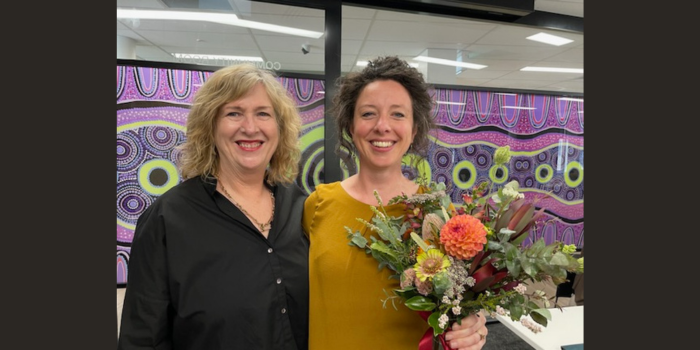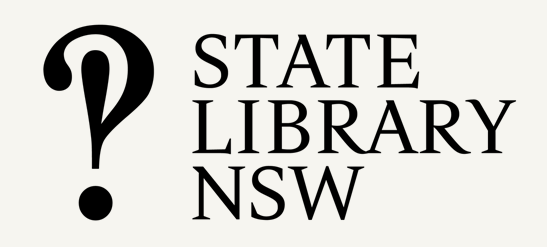Today marks an important milestone for NSLA, as we launch our 2023-2026 strategic plan.
This plan considers the shared priorities of NSLA libraries and identifies where we can be most effective as a collective at this moment in time.
In this Q&A session, NSLA Chair and IFLA President-elect Vicki McDonald, and NSLA’s Executive Officer, Barbara Lemon, shares some highlights of the strategy, and insights into the emerging trends that shaped its direction.
Can you each share a collaborative project or initiative from NSLA’s new 2023-2026 strategy that you would like to highlight, and tell me why?
Barbara Lemon
I’m particularly excited by the shared approach to social media collecting. I like that we’re not jumping to shared tools or platforms immediately, but instead, initiating a challenging intellectual exercise with practitioners in and outside of NSLA libraries. Through a structured set of facilitated conversations, we’ll be working carefully through the ethical, legal and logistical questions of collecting social media datasets and making them available for research through libraries. This kind of collective thinking can be very stimulating and very inspiring.
Vicki McDonald
NSLA continues to be committed to the Culturally Safe Libraries Program and has introduced annual Indigenous cultural capability audits mapped to the ATSILIRN Protocols, to track and transparently report progress in cultural capability in NSLA libraries. The audit will hold NSLA libraries to account and reveal opportunities for joint policies and training arising from the Program.
A culturally safe library ensures an emotionally safe environment for all, especially Aboriginal and Torres Strait Islander employees and clients, to express themselves and their culture, history and identity with dignity and pride. It is our responsibility to not only foster shared respect, meaning, and knowledge, but to deliver culturally respectful library services and access to the sensitive and significant collection materials held in NSLA libraries.
How does the new strategy build on NSLA’s existing strengths?
Barbara Lemon
I would describe NSLA’s strengths as trust, generosity, and evidence. Our member libraries have built trusting and collegiate relationships over the last five decades; we willingly share our intellectual labour with each other and with the broader GLAM sector; and we have a proven track record of delivering major projects and resources that have really made a difference. I think the new strategy builds on all of these strengths by taking our collaborative work up a notch. It catapults us from the significant step of building the National edeposit service (NED) to making it the most diverse and sustainable collection it can be; from training staff in cultural capability to enshrining those lessons in policy that is backed by legislation; from information-sharing about the collection of online publication formats to written commitments about how we will collect together, based on rigorous testing of tools and ideas.
Vicki McDonald
The new NSLA Strategy 2023-2026: Leading Together builds on NSLA’s biggest strength – our collaborative approach. We have set a mission to share knowledge, resources and expertise to advance our libraries and to drive positive, respectful change for the benefit of Australians and New Zealanders. Our new vision – our collective action creates long-time benefits for our libraries and communities – will focus and guide our work now and into the future.
We have set four strategic priorities – Collections, First Nations, People, Audience and Advocacy – to drive our objectives with collaborative projects and initiatives. At each Board meeting, we will report on progress against the Objectives to ensure we are delivering on our commitments for our libraries and communities.
In what ways does the new strategy address the need for greater representation and leadership from First Nations library professionals and tangata whenua?
Barbara Lemon
Our strategy is really about doing the work necessary to ensure that NSLA libraries will be attractive to, and supportive of, First Nations leaders and library professionals in the first place. In Australia, we’ll be continuing to formally monitor cultural awareness in our practices and to provide training for staff. We’ll be jointly commissioning ICIP policy templates and checklists for all state and territory libraries. We’ve also commenced a very specific collaborative project to improve descriptions of First Nations collections, with consultant Tui Raven and a working group of metadata experts from five library sector organisations. We’ll have a strong voice from our First Nations Advisory Group, with representatives from Australia and Aotearoa coming together in Darwin in May, and with career progression and staff support firmly on the agenda. We’ll also continue to support our network for Aboriginal and Torres Strait Islander staff in NSLA libraries, the self-named Blakforce.
Vicki McDonald
The new strategy, Leading Together, strengthens our focus on both First Nations and People. By recognising and sharing the expertise of our people, focusing on development opportunities, and strengthening respectful and responsive relationships between libraries, First Nations library professionals and tangata whenua, we build our future leaders.
What emerging trends, for example in technology or collection development, influenced the development of the strategy?
Barbara Lemon
In collection development, the obvious one is the strong push for critical librarianship. That is to say, completely re-evaluating the way that we acquire, describe, and set access provisions around collections. Increasingly libraries are taking more flexible approaches to collection management, working closely with communities and donors to ensure that collections are described, handled and stored in ways that are in keeping with relevant cultural protocols. In technology, we have recently seen the emergence – or more accurately, the scaling up – of broadly available, user-friendly AI technology and machine-learning tools. This has certainly influenced some of our operational plan content, and I think we’ll see it playing a much more central role in our next strategic plan in 2026.
Vicki McDonald
Libraries have always been early adopters of technology and NSLA’s performance in this area, including National edeposit service (NED), has shown the power of using technology collaboratively and the long-term benefits for Australians. Collections continue to be at the heart of our work, and they have prominence in the new strategy, but we must continue to embrace new technologies. Artificial Intelligence offers untold opportunities for the exploration of our collections, to delve into vast layers of memories, uncover hidden stories and bring characters to life. Our challenge is to use it in responsible ways and harness its potential for good.










